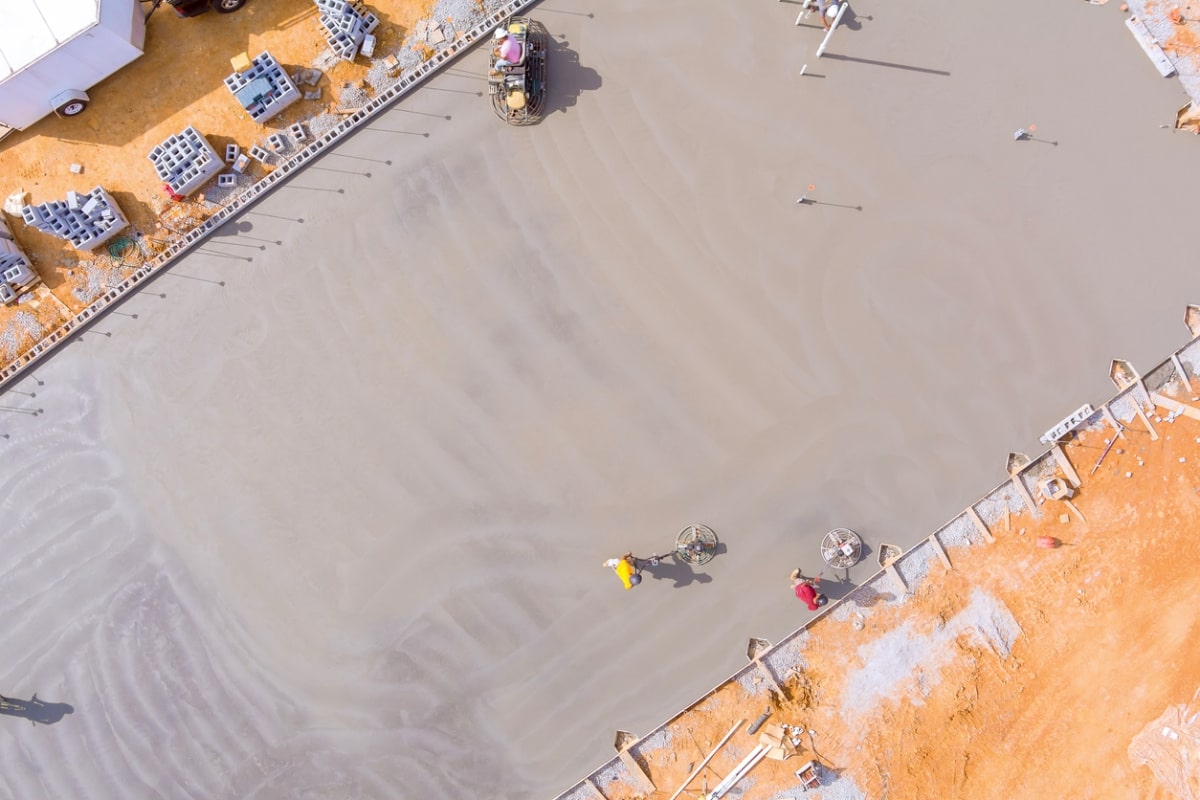Weigh batching of concrete requires precise load cells to ensure the use of accurate aggregate amounts. Even small errors can be costly. The more accurate and efficient your scaling system, the more productive and streamlined your concrete batching.
Learn how to make the process effortless, why accurate aggregate weighing matters, and how to use construction scales and in-motion weighing scales to improve efficiency in this guide.
The Critical Role of Accurate Aggregate Weighing
Aggregates are stored in separate hoppers or bins, often divided into multiple stockpiles, each containing material within a narrow size range. In many cases, aggregates are stored in single sizes to prevent segregation. This separation helps ensure consistent concrete quality, but it only works if the weighing process is accurate and reliable. If aggregates aren’t weighed properly, the final mix may fall short of design specifications or fail to meet required codes and standards.
Even small weighing errors can lead to costly mistakes, including wasted materials, rework, and project delays. Concrete design standards allow for only minimal tolerance. For instance, the ASTM C94 Standard Specification for Ready-Mixed Concrete requires aggregate quantities to be within ±2% of the required mass. Cementitious materials, water, and admixtures must also meet their tolerance limits for concrete batches.
If your aggregate weighing hopper — or any other part of your concrete scale system— fails to meet these precision requirements, the resulting concrete can have significant quality issues. The table below summarizes how incorrect aggregate amounts affect concrete performance:
| Condition | Effects on Concrete |
|---|---|
| Insufficient aggregate | Higher risk of cracking, increased shrinkage, lower strength, stickier mix, harder to pump/finish. |
| Excessive aggregate | Greater segregation, reduced workability, lower strength (voids, poor paste coverage), poor surface appearance, less cohesion, higher permeability. |
How Concrete Batching Works
Concrete batching is the process of combining cement, water, admixtures, and aggregates in precise proportions to create a concrete mix that meets engineering specifications. Depending on the plant setup, batching can be manual, semi-automatic, or fully automated.
The process involves several key stages:
- Storage: Aggregates are held in bins, cement in silos, and liquid admixtures in tanks.
- Discharge: Materials are released from their storage containers and fed to a batch weighing hopper or separate cement weigh hoppers.
- Weighing: Load cells measure each component according to the required accuracy and standards.
- Mixing: The correctly proportioned materials are released into the mixer.
- Water addition: Batch water is added to achieve the target water-cement ratio, with adjustments made for the aggregates’ moisture content.
- Blending: All ingredients are mixed to create a homogeneous concrete mass.
Weight Batching vs. Volume Batching
Concrete can be batched by weight or volume, but most modern standards specify weight batching because it provides far greater accuracy.
Water and liquid admixtures may be measured either way, but weighing offers the most reliable results. Flow meters can be used for volumetric batching; however, they’re prone to issues such as leaks or air pockets, both of which can alter the actual water amount and disrupt the delicate water-to-cement ratio.
Ultimately, mass measurement with high-precision load cells remains the gold standard for ensuring consistent, high-quality concrete mixes.
Scale Accuracy and Maintenance
Because the aggregate mass must remain within strict tolerances, your scale needs to be accurate. At the same time, it has to withstand the harsh, heavy-duty environment of a concrete plant, where dust, vibration, and moisture are constant factors.
But that raises an important question: Is your scale truly reliable? All load cells require regular maintenance, servicing, and calibration to maintain accuracy. If your scale doesn’t consistently display the correct weight of a known object (calibration weight), it’s time for professional calibration.
For concrete batching operations, calibration and repair should always be handled by qualified professionals. While diagnostics and servicing involve some cost, they’re far less expensive than project delays or rework caused by inaccurate weighing. The reliability and experience of your calibration provider ultimately determine the precision of your scale and your peace of mind.
High Precision In-Motion Belt Conveyor Scales
Traditional aggregate weighing methods rely on centralized weight hoppers. While effective, this approach can slow down the batching process. But what if you could weigh aggregates while transporting them to the mixer? That’s what in-motion belt conveyors allow you to do.
In-motion weighing systems from UniFide CST allow you to effortlessly measure aggregate weight directly on the transfer conveyor belt. Even better, these scales can seamlessly integrate into your existing conveyor systems, eliminating unnecessary stops and starts while boosting productivity, efficiency, and accuracy.
There’s no need to slow down the conveyor, let alone stop it. UniFide CST’s in-motion scales deliver precise readings even at high belt speeds. Each system combines advanced sensors with intuitive software integration to ensure continuous, highly accurate measurements.
Built for demanding environments, UniFide CST’s heavy-duty construction scales and conveyor systems are engineered for long-term reliability. Their durable load cells and components are rigorously tested to perform in dusty, moist, and vibration-heavy conditions common to concrete and construction sites.
Take Your Construction Weighing to the Next Level With UniFide CST
Don’t let inaccuracies compromise your concrete. UniFide CST provides industrial‑grade scales engineered for precision in concrete batching. Contact us to learn how our scales and load‑cell solutions can integrate with your plant and deliver the accuracy you need for every pour.
If your concrete batching project is short-term (e.g., an infrastructure project you have bid on), you can also take advantage of our scale rental services. You don’t need to purchase equipment if you won’t use it long-term. Instead, achieve an immediate ROI when you need it without worrying if the investment will pay off.
